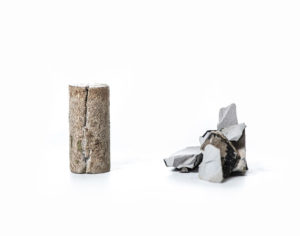 Pacific Northwest National Laboratory’s transformative Self-Healing Cement fills cracks and restores cement to its original mechanical integrity in intense, high-temperature environments. The combination of synthetic polymer and cement outperforms conventional concrete. The pollution-preventing technology extends the life of cement by at least 30 years. The cement also reduces drilling interruptions and costly repairs. Self-healing cement could resolve major concerns about the sealing of wellbores for oil, gas and geothermal heat production. Leaks in wellbores cause contamination and limit the ability to provide clean energy alternatives. These leaks contaminate aquifers and surface waters. PNNL’s self-healing cement can deliver significant energy with minimal carbon release to the atmosphere. Currently, tens of thousands of tons of conventional cement ends up in landfills. With the additional 30 years of usage of the composite, less cement would go to landfills. The synthetic polymer brings flexibility to cement, making it useful for infrastructure that protects people worldwide, ranging from dams to nuclear waste facilities. The polymer’s flexibility adds 50 to 70% more elasticity to the cement, improving durability against natural disasters like earthquakes.
Pacific Northwest National Laboratory’s transformative Self-Healing Cement fills cracks and restores cement to its original mechanical integrity in intense, high-temperature environments. The combination of synthetic polymer and cement outperforms conventional concrete. The pollution-preventing technology extends the life of cement by at least 30 years. The cement also reduces drilling interruptions and costly repairs. Self-healing cement could resolve major concerns about the sealing of wellbores for oil, gas and geothermal heat production. Leaks in wellbores cause contamination and limit the ability to provide clean energy alternatives. These leaks contaminate aquifers and surface waters. PNNL’s self-healing cement can deliver significant energy with minimal carbon release to the atmosphere. Currently, tens of thousands of tons of conventional cement ends up in landfills. With the additional 30 years of usage of the composite, less cement would go to landfills. The synthetic polymer brings flexibility to cement, making it useful for infrastructure that protects people worldwide, ranging from dams to nuclear waste facilities. The polymer’s flexibility adds 50 to 70% more elasticity to the cement, improving durability against natural disasters like earthquakes.





Self-Healing Cement – Has impact on road/bridge infrastructure been evaluated. A lot more miles of road/bridges than wellbores, so impact could be dramatic.